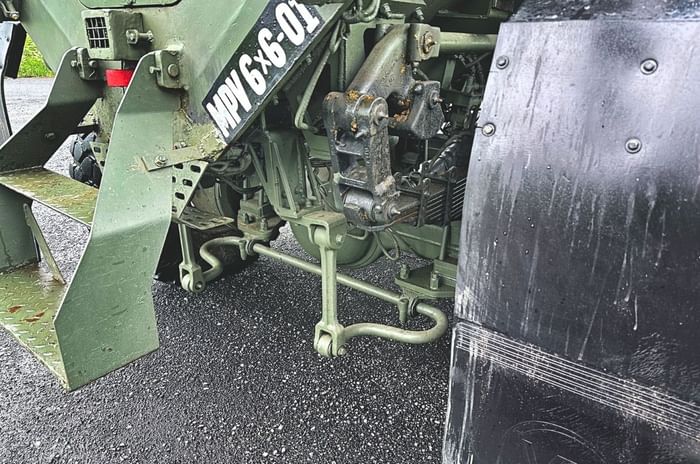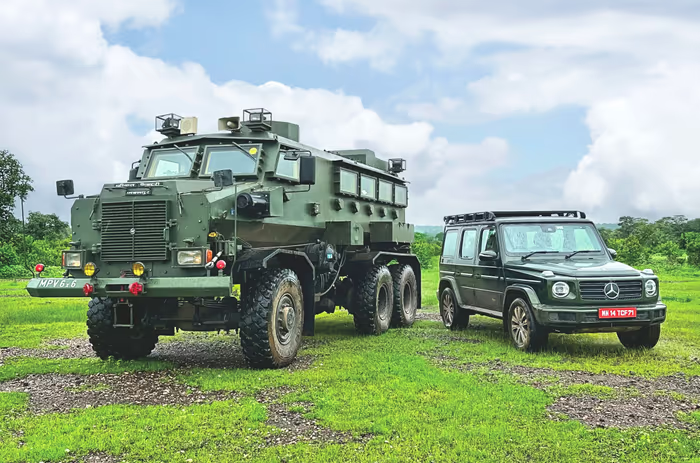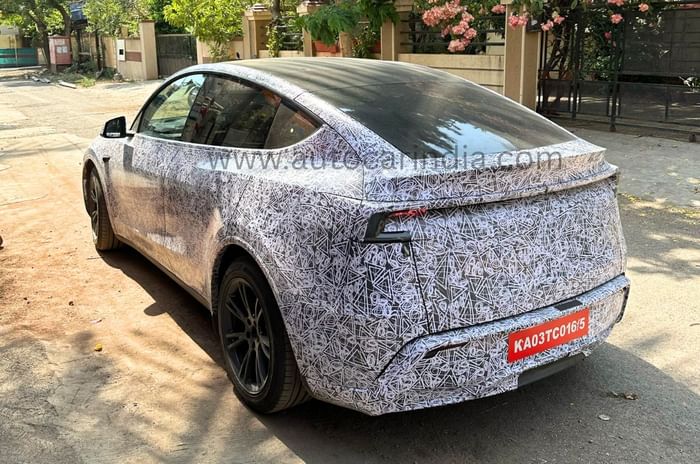We visit the Vehicle Factory Jabalpur to meet the Made-in-India Airavat, driving in a Mercedes G-Wagen – an off-roader that stays true to its military roots.
Painted in a military shade of green, these two vehicles standing cheek by jowl look like kindred souls. And truth be told they are. Both are machines made to fulfil a specific military requirement, both seem to have been built in a metal foundry, and both carry some serious off-road gear and capabilities. However, getting the most authentic military off-roader-based SUV to meet a modern day version of what the genre has evolved into takes some doing.
Look at a map of India and Jabalpur sits right at what seems to be the geometric centre. This is why the British built the first armament factory here in 1904, well away from contentious border areas. Known as the Gun Carriage Factory, it was followed by several heavy foundries, field gun factories, and armament production facilities. Most of these came under the purview of the Ordnance Factory Board – one of the oldest organisations in India founded as far back as 1775, a time when the Mughals were still around.
Armoured core
Where we’re headed, specifically, is the Vehicle Factory Jabalpur, known for making the Nissan Jonga ‘one tonne’ 4W73 – essentially a military version of the Patrol (P60) – and the Shaktiman (from Man trucks of Germany) four-wheel-drive truck. Named after Indra’s war elephant, the Airavat we’ve come to meet is designed to protect its occupants in places they are likely to come under attack from heavy machine guns, mines, and other potentially lethal munitions like Rocket Propelled Grenades (RPGs). Designed and engineered predominantly in India, with mechanical aggregates like its engine, gearbox and axles taken from Ashok Leyland, this monster is a triumph of Make-in-India engineering and local production.
Our ride for the day was the Mercedes G-Wagen – easily the most authentic military-spec vehicle you can buy – with many of its aggregates fundamentally unchanged from when it was first designed for purely military use. That the G-Wagen started life as a military vehicle, most of you are aware of. What isn’t as well known is that Mercedes’ icon owes its existence to the then Shah of Iran, Reza Shah Pahlavi. Happy with the Mercedes off-road trucks he had bought for his military in the early 70s, Shah placed a large order for a smaller, more compact off-roader to patrol his vast borders. It had to be super capable in sand, very robust, and Shah is even said to have stipulated that it should make for a good hunting car, so it had to be fast and stable at speed. The order was large enough that Mercedes accepted immediately.
Birth of an icon
The problem was that Mercedes didn’t have an off-roader that fit the description. Worse it had nothing in the pipeline and on the drawing board. While Merc’s off-road trucks or Unimogs were extremely capable, designing and engineering a more compact vehicle would take time, especially if it had to be better than anything currently available. Mercedes took so long to engineer the vehicle that by the time it was ready, Reza Shah was deposed by Ayatollah Khomeini and the Iranian revolution.
So, Mercedes lost that order, reputed to be around 20,000 vehicles. What came out of it, however, was the first civilian version, the G-Wagen, or the W460. Wish Mercedes had kept the military moniker, it was known as the Wolf; what a cool name. When it came to producing the G-Wagen, Mercedes also took the help of partner Steyr-Daimler-Puch in Austria, where the G is still ‘hand assembled’ to date.
The Austrian company was a great partner for the G-Wagen project, as it already made the unique little Halflinger and very capable Pinzgauer van, both extremely capable off-roaders. The Steyr Puch team that worked on the G-Wagen was headed by Erich Ledwinka, chief engineer of Steyr-Daimler-Puch and son of legendary Tatra engineer Hans Ledwinka – the one Ferdinand Porsche admitted to ‘looking over the shoulder of’ when engineering the VW Beetle. So, even more of an Austrian connection for the G-Wagen; Ledwinka was Austrian as well. The final styling, with the clear, clean-cut profile, was defined by none other than legendary Mercedes designer Bruno Sacco, who passed away recently.
Sizing up the beast
.jpg?w=700&c=0) Angled surfaces deflect, minimise projectile attacks
Angled surfaces deflect, minimise projectile attacks
Now, while the G-Wagen is quite formidable and large when seen driving in traffic, it gets dwarfed when parked next to the Airavat. A massive 8.2 metres long and over 3 metres high, this 6X6 is so big that I need to shift to a wide-angle mode on my phone just to fit it in. Displacing an equally staggering 21 tonnes, this vehicle also gets a solid, boat-like ‘V’ hull. And armoured steel feels like it is as thick as that on a Godrej safe. Protection on the 6X6 is Stanag level three and above.
Time for a bit of a walkaround, and what strikes me first is the big, openable radiator grille. Full of slats, which are there to deflect bullets, this thing protects the soft radiator core behind it, and can be hinged open. Roughly the size of a small door, it dwarfs any modern BMW grille. Open the bonnet electrically – it’s too heavy to move manually – and what sits underneath is a 320hp, 1,250Nm straight six diesel from Ashok Leyland. That’s not too much power for the weight, but what’s sure to help is the torque. That, and the fact that it gets an 8-speed manual gearbox.
.jpg?w=700&c=0)
Black rod sticking out of bonnet is the steering linkage.
Around the side, there’s no sloping armour, but the front bash plate is 12mm thick and goes around the side. You can see the big ‘V’ of the hull, shaped that way to disperse the shock of any mine exploding under the wheels. While the cowl of the bonnet has a Shaktiman-like chamfered edge to it, what you get higher up (where the steel is not as thick) is something that comes as a surprise. What I’m talking about is an external steering linkage. Yes, check that out. This allows the hull to be built without making holes or perforations in it, which could compromise protection. What you also see on the outside is the EGR can (Exhaust Gas Recirculation) that’s part of the exhaust – yet another system that is normally installed much lower down and inside the bonnet.

Serpentine anti-roll-bars at rear.
Further up, the Airavat also gets two thick flat-plane windscreens – one of the few imported components. It also gets something only serious off-roaders get – a winch; only this one can pull 15 tonnes! What you notice along the sides is that there are no doors and retractable windows, only armoured portholes; again to maintain the integrity of the hull. There’s a large, utilities water tank above, and the seriously cool-looking twin axles. You also get a hose that delivers pressurised air, which can be used either for the tyres or any other service-related requirement. At the rear, you can see the ‘V’ shape of the hull and have electrically operated doors – they are too heavy to open by hand.
.jpg?w=700&c=0)
Big winch can pull 15 tonnes.
Motive force
Time to get behind the wheel; first up, the G-Wagen. Now this is probably the most solidly built Mercedes, and you notice this almost instantly. The solid ‘clack’ from the lock and the thud when you shut the door are indications of that. But what also shines through here on the torture track is just how solidly everything is located and bolted together. There’s just no hint of flex, even with all the heavy components hanging on the chassis. And there sure is plenty of heavy stuff, the big diesel, the gearbox, the huge front diff, the central transfer case, and the truck-like rear axle. Keeping all of these together is the backbone of the G – the overbuilt, closed box-section ladder chassis. Mercedes did such a good job back in the 70s, and many of these are fundamentally the same even today, with only mods and upgrades carried out. Can you imagine that?
.jpg?w=700&c=0)
Straight-six diesel on the G is creamy smooth, responsive from low engine speeds.
Yeah, the G was evolved to permanent four-wheel drive in the 90s, but that apart, it stays very true to the original. Just to prove how capable it is, the G just waltzes through a really difficult slushy off-road section we drive through, its famous three locking diffs not even engaged. And I just love the big, smooth straight-six diesel. Merc’s straight-six diesels just have so much turbine-like smoothness and character, and this one, with the solid torque delivery and long gearing, delivers serious thrust. Switching to Sport tightens up the body roll in faster corners, and it’s a great mile muncher; however, the real everyday star’s still that engine with 330hp and 700Nm of torque.
.jpg?w=700&c=0)
The cabin is air conditioned. No, those aren’t sunroofs, but hatches for emergencies.
The Airavat has 10hp less, but considerably more torque. And while the G-Wagen is heavy at around 2.5 tonnes, the 6X6 has around 18 tonnes more to lug around. Getting into the cabin from the rear is disorienting at first; the climb up to the cab and the massive tyres means you are sat above the height of most trucks. But despite the height, visibility here is dismal. The small windscreens and side windows mean I can see only part of the narrow test track and this thing feels so solid and heavy that I don’t quite know how it will respond to the steering.
This is partly why taking off from rest raises my heartbeat. There isn’t much grunt, and you can feel the engine having to work to get off the line. But move we do, finally; accompanied by the considerable din of a big diesel. As expected, there’s play in the steering and this makes it difficult to initially keep it within the close retaining walls of the track.
.jpg?w=700&c=0)
Restricted visibility from tiny windscreen and side window makes driving this behemoth very tricky.
First and second gears are also quite useless after we get going, and I soon learn to short shift into the third. This finally gets us some forward speed rather than just a big increase in engine rpm and noise. The gearbox also takes some getting used to. You need to either double de-clutch or rev match every shift. And because the gearbox has the first half of its gears on the left and the rest across to the right, you need to clearly transition by popping it in neutral, releasing the clutch and then selecting 5th, 6th, 7th and 8th on the right of the double ‘H’.
.jpg?w=700&c=0)
This 6×6 is clearly not what you want to see charging into your rear view mirror.
Once up to speed, getting in sync with the manner in which the steering helps change direction is very difficult too. The bulk and weight exert the most influence, and as a result, reactions are super slow and delayed; the weight transfer making its presence felt after a bit of a delay. And that’s despite the fact that the Airavat gets anti-roll bars (because of the weight). And unlike the ladder frame-equipped G-Wagen, this is a super stiff monocoque.
.jpg?w=700&c=0)
8-speed gearbox is difficult to use.
For all its weight, the six big brakes, however, do work surprisingly well. There’s plenty of bite, the compressed air system is fairly linear, and there isn’t too much dive either. What’s also amazing is how that double axle in the back floats over most big obstacles. The load is split in two at the rear, and the axle just snakes over big bumps, one of the axles always in contact with a flat section; brilliant. What also helps is that all the seats have shock absorbers built into them. However, they are not there for comfort, they are present to soften the impact of an explosion from a mine or a big shell.
.jpg?w=700&c=0)
Seats have shock absorbers to soften the impact of explosions.
Now, not wanting to get stuck – with upwards of 20 tonnes to pull out – prevented us from getting too adventurous on the off-road track initially. But with traction from the six axles, a low range, diff locks and those massive tyres, the Airavat breezed through what seemed like a lake of slush, without the need to engage any of the systems. Off-road day beckons.
Gene genie
While we have seen several cases where military vehicles have successfully transitioned into production cars and progressively softened, the G-Wagen still remains faithful to its origins with a lot of its military-spec hardware still carried over.
On the flip side, there’s almost no chance of ever seeing a civilian version of the Airavat. To begin, it is likely to cost between Rs 3.5 crore and Rs 5 crore, depending on the specification. And you would need to get special permission to own one. The G-Wagen, on the other hand, costs Rs 2.55 crore.
.jpg?w=700&c=0)
Still, wouldn’t it be nuts seeing one take up VIP protection, airport security or even an urban anti-terrorist role? Would certainly provide a secure platform from which to mount a defence. And wouldn’t you love to drive up to the porch of a swanky five star hotel in one, just to see the look on peoples faces? I certainly would.
The G-Wagen; it did what?
.jpg?w=700&c=0)
The G-Wagen may have been born to serve a military requirement, as many others were, but the G was also designed to run at high speed off-road. This meant it could do wonders in long raids, especially if so prepared. So, in the early ’80s, Mercedes took a 280 GE and massaged the M110 engine so it could deliver 197hp. The cams came from the soon-to-be-updated 280SL (R107) and the engine inlet was moved inside the cabin so it could pull in cleaner air. To get more high speed, the aero was improved by using cut plastic drain pipes around the windscreen and an altered rear section. Drag was reduced from 0.52 (pretty much what you get with a brick) to a much lower 0.41. So top speed was increased to 200kph with all the changes. It also must have helped that Jacky Ickx drove that year in 1983.
Q&A with Sanjeev Kumar Bhola, chief general manager, Vehicle Factory Jabalpur

For how long has VFJ been making MPVs in India? What are some of the new features?
We were pioneers of making mine-protected vehicles in India and started around two decades ago. We now have blast attenuating seats with individual shock absorbers and air conditioning for comfort.
What were some of the challenges in making this new 6X6?
We are now more than 90 percent made in India. The big challenge is to find good quality armoured steel, which is expensive in India. And we are looking to increase the Stanag level of the windscreens and windows.
Are you looking at exporting this new 6X6?
Yes, we are very seriously looking to export to other markets, and are in discussions with some countries.
Also see:
Tatanagar armoured car: the first ever Tata vehicle driven





.jpg?w=700&c=0)


.jpg?w=700&c=0)




